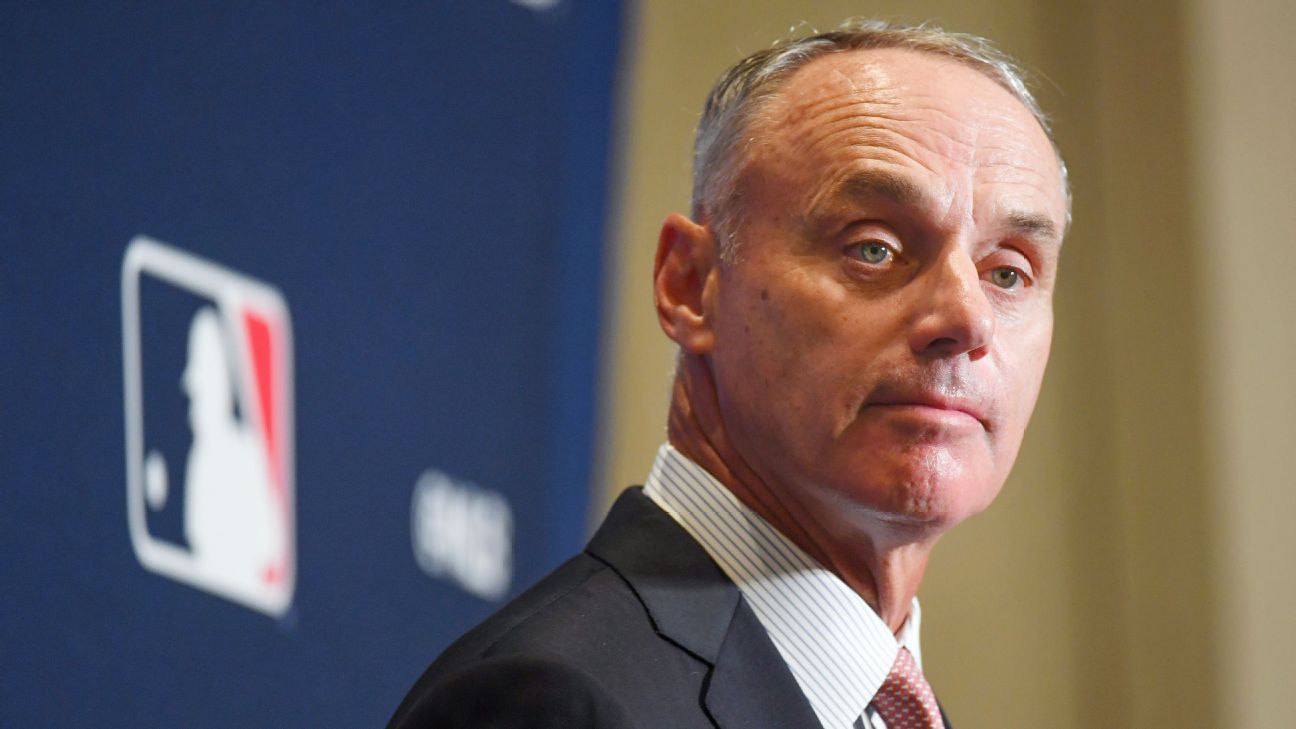
With the MLB lockout started by owners on Dec. 2 now in its third month, Major League Baseball requested the help of federal mediation Thursday, which would have potentially inserted a neutral third party in negotiations. The MLB Players Association responded by declining the request, stating that “the clearest path to a fair and timely agreement is to get back to the table.”
Where does the attempt at mediation leave negotiations? Could this create even more hostility between the two sides? And what does it all mean for the big question: When will we actually see Major League Baseball players on the field? We enlisted ESPN MLB experts Jeff Passan and Jesse Rogers to sort it all out.
The league reached out to the Federal Mediation and Conciliation Service on Thursday. What does that mean?
A mediator is a neutral third party whose goal is to help two sides in a labor dispute reach common ground on issues that are preventing a deal being reached. The FMCS is the governmental arm that can help manage labor disputes like MLB’s lockout, but necessitates both parties agree to mediation. A mediator’s job is not to negotiate a deal or impose any specific conditions. Mediators are not arbitrators, who hear each side of an argument and deliver a ruling. The most effective mediation helps guide two parties to places they have not been able to get themselves.
Has this happened before?
It happens quite often in labor disputes. MLB used a mediator during its 1981 and 1994 strikes. In 1981, the mediator, Ken Moffett, worked with both parties during the 50-day strike — and wound up being named executive director of the MLB Players Association before being fired less than a year later. During the 1994 strike that wiped out the World Series, mediator Bill Usery was unsuccessful in bringing the parties to a resolution.
2 Related
For all of the times a mediator hasn’t led to an agreement — before the 2011 NFL lockout, 16 days’ worth of mediation wound up with the union disbanding and the players suing the league in federal court; later in the same year, three days of mediation in NBA talks did little to change an impasse — there have been successes. After FCMS mediator Scot Beckenbaugh worked with the NHL in 2013, owners and players praised him publicly for his work. Beckenbaugh, who remains in a high-profile position at the FCMS, could serve as the mediator if the sides ever enter the process.
Why would the league seek a mediator when it’s the one that implemented a lockout?
There could be several reasons. One could simply be that MLB is frustrated. If the league believes it has addressed most, if not all, of the union’s concerns, but has found little progress through regular negotiations, it could enlist a third party to help. If the union accepts and the mediation fails, it could bring the sides closer to the regular season without a deal — and perhaps sow doubt in the minds of players who begin getting paid on Opening Day. At that point, the league may hope some in the union push its leadership to make a deal.
The move could also be more tactical. Players have pointed out that this came only a few days after the league promised to provide another proposal to the union. The league says they promised a response, not a counterproposal, and asking for a mediator was their response. If the public interprets declining third-party help as a sign that the players are being obstructionists, it could help the league in the lockout’s PR battle.
Why did the union say no?
For a union seeking significant change, there could be a feeling that the mediator would use the last collective bargaining agreement as a baseline and lean toward suggesting something closer to the status quo. The owners would be fine with that.
Also, if the union feels progress isn’t likely with a third party, then wasting valuable time might not be in its best interests. The history of mediation in baseball isn’t exactly fruitful, either, leading to doubt about a mediator’s ability to bridge what’s currently a massive gap between the sides.
Does the union rejecting a mediator set negotiations back even further?
Not necessarily. It could actually be a good thing if one party — the union, in this case — believes a mediator won’t be helpful. The process could easily turn out to be wasted time — from waiting to schedule the mediation to the sessions themselves. Could the rejection raise animosity between the parties? Maybe, but it’s not like there isn’t rancor already. Rejecting the use of a mediator is well within the rights of either party.
Where does this leave the sides?
The same place they’ve been for almost a year of negotiation now: nowhere good. The frustration from both parties is evident — and was made clear in the last two bargaining sessions. Ten days ago, the league said it was open to a pre-arbitration bonus pool proposed by the union — except instead of the $105 million the players sought, the league offered $10 million. In a counter a week later, the union amended its offer … to $100 million.
With spring training set to begin in 1½ weeks, moving $5 million or $10 million at a time on one issue with at least a half-dozen other major ones unresolved is no recipe for a resolution. Perhaps there will be a time for a mediator to intervene, but the union believes that time is not now, and that belief is enough to scuttle the possibility.

